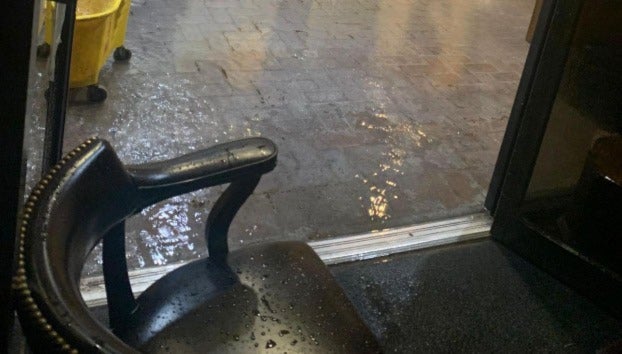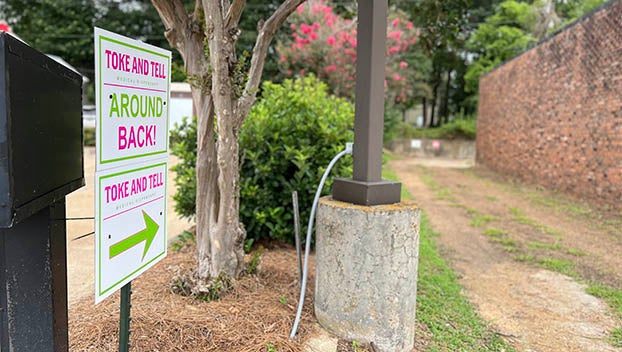Natchezians helped with rescue efforts
Published 12:04 am Sunday, August 30, 2015
NATCHEZ — As the water rose, so did the fear.
Neighborhoods were ravaged, and million-dollar highways and bridges became nothing but an afterthought in the wake of a natural disaster that showed no mercy.
The weather effects of Hurricane Katrina were relatively brief, but the storm left a lifetime of scars.
After Katrina devastated much of the Mississippi Gulf Coast, many Natchezians felt the call to lend a helping hand.
Trevor Brown, deputy director of the Historic Natchez Foundation, said picking up his life and moving to Bay Saint Louis to aid in relief work was a no-brainer.
“It looked way worse than any of the pictures depicted,” said Brown, a Baton Rouge native. “In some areas, we were walking on top of debris that was 15-feet thick. It was unbelievable.”
Brown, along with five other volunteers, was charged with restoring historic structures that were damaged — or in some cases demolished — by Katrina.
“The program we worked with gave us $27 million to do historic preservation and help thousands of people,” Brown said. “I personally worked with 150 homeowners. They all had a story to tell.”
While working on construction, Brown said he began to form relationships with those who were affected by the storm’s wreckage.
The people he met and the stories he heard, Brown said, will stick with him forever.
“Whether it was the couple who lived in a FEMA trailer for years or the 75-year-old man who crawled out of a window while his house washed away — what happened down there was unforgettable,” he said.
For five years, Brown worked to stabilize much of the Gulf Coast in the form of housing repair and renovation.
When he left Bay Saint Louis in 2012, Brown said he returned with a changed heart, and countless experiences he would never forget.
“It’s kind of hard to think about what it was like to live amongst things like that,” Brown said. “I know some people are still recovering, and some will never recover.”
Brown wasn’t the only one who felt the tug to join in the relief effort.
Ron Miller, who also worked to restore historic properties along the Gulf Coast, said he traveled south with a mission to save history, but left with memories he would cherish forever.
“I found that everybody had a story of what it was like to be there when the storm hit,” Miller said. “They wanted to share the impact.”
Miller remembers talking to a woman who lost everything in the storm.
All of her belongings, Miller said, were washed away when Katrina swept through.
“She told me, “I don’t know how I’ll keep going. I don’t know how I will get back to normal again,’” Miller said.
The heartbreak was exponential. In some cases, Miller said just listening to those who were affected was the best form of assistance — and the quickest way to heal.
From rebuilding shotgun houses to government buildings, Miller said his scope of work was wide.
“The human suffering was so immediate,” Miller said. “It was heartbreaking.”
Since returning to Natchez, Miller said he has visited the Coast a couple times to check on renovation projects.
He said visible scars left by the storm remain, but many wounds have begun to heal.
“You can still see some holes, but it’s come a long way since day one,” he said.
Natchez Mayor Butch Brown, who was serving as director for the Mississippi Department of Transportation during Katrina, said his first mission after the storm was opening the countless highways and bridges that were destroyed.
Millions of dollars were funneled to the Coast, he said.
“I called everyone I could think of who could assess the damage and get a quick recovery,” Butch Brown said. “We worked alongside several municipalities to completely rebuild the infrastructure.”
Within 18 months, Butch Brown said MDOT was able to completely rebuild U.S. 90, which runs along miles of Gulf Coast beaches and is a main transportation artery and multiple bridges in Biloxi and Ocean Springs.
From the Alabama state line, across Mississippi and to Louisiana, Butch Brown said the Gulf Coast slowly began to open up its arteries, allowing for its heart to beat again.
“The recovery of Katrina changed the makeup of the Mississippi Gulf Coast,” Butch Brown said. “It was a heady experience, and it’s one I will never forget.”
Looking back 10 years later, Trevor Brown, Miller and Butch Brown said Katrina would forever be imprinted in their hearts and minds.
And while much of the Coast is still recovering, all three said their time spent helping those in need was not fruitless.
“It was a really incredible, unprecedented time for the United States and in my life,” Trevor Brown said. “I will always, always reflect on Katrina for the rest of my life. No doubt about it.”





